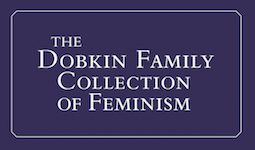ARCHIVE: Virginia Dwan Gallery Archive.
Scarce Printed Matter
Dwan, Virginia. Dwan Gallery Collection. 1959-1971.
A history of Virginia Dwan’s gallery told through the ephemera it produced for exhibitions in Los Angeles and New York between 1964 and 1971. Present are a variety of items in various forms, offering a glimpse into the character of the gallery. The files contain posters, announcements and postcards all reflecting the many artists associated with the gallery and the events and sessions that were held there, revealing Dwan’s project history to be at the core of emerging trends in contemporary art throughout the 1960s: Dwan championed conceptual, minimal and earthwork movements with momentous exhibitions and a roster of artists that include William Anastasi, Carl Andre, Arakawa, John Chamberlain, Walter De Maria, Niki de Saint Phalle, Mark di Suvero, Tom Doyle, Dan Flavin, Michael Heizer, Ed Kienholz, Yves Klein, Sol LeWitt, David Novros, Claes Oldenburg, Robert Rauschenberg, Ad Reinhardt, Robert Ryman, Fred Sandback, Robert Smithson and Kenneth Snelson among others.
In 1959, Dwan opened her first gallery in a tiny storefront in a Spanish Mission-style building in the Westwood section of Los Angeles in 1959. The artists she presented included Robert Rauschenberg, Yves Klein, Ad Reinhardt, Joan Mitchell, Franz Kline and Philip Guston. Her independent wealth allowed her to open a gallery without worrying about business and sales. Three years after opening, the Dwan Gallery moved into a new Westwood Village space especially designed to express the gallery’s contemporary aesthetic. Dwan hired John Weber, who brought in a few of his own artists and organized some shows, including “De Europa,” one of the first exhibitions of Arte Provera the United States. In May 1962, Dwan moved to a new location, which was twice as large as her first space and was designed by Morris Verger, a student of architect Frank Lloyd Wright. Dwan organized several influential exhibitions in her new space, including “My Country ‘Tis of Thee,” an exhibition of Pop Art held in November of 1962. This show belongs to a substantial group of exhibitions in Los Angeles between 1962 and 1963 that heralded the arrival of Pop as a major artistic style in the early 1960s. Though “My Country ‘Tis of Thee” focused on New York artists, it also included the work of Edward Kienholz. Another important exhibition included “Boxes” (1964), which featured box-shaped works by an international group of artists including Los Angeles sculptors Larry Bell, Tony Berlan, Ed Kienholz, Ron Miyashiro, and Ken Price. In 1965, newly divorced, Dwan moved to New York City and founded an east coast branch of the gallery.
Early exhibitions at the Dwan Gallery showed Abstract Expressionist artists and works of art from New York, which Dwan consigned from other galleries. After traveling to New York and France, Dwan’s interests and tastes manifested in exhibitions by 1961 with Yves Klein. Through Klein, Dwan made connections to other Nouveaux Réalistes artists that the gallery featured in solo and group shows. Later exhibitions featured Land and Minimalist artists. Dwan recognized that many of her shows were not considered salable but continued to show the avant-garde. She saw the gallery as an opportunity to expose the public to different styles of art.
The Dwan Gallery Los Angeles closed in mid-1967 but the New York branch remained open. The art gallery closely identified with the American movements of Minimalism, Conceptual Art and Earthworks. By 1971, under pressure to support her thirteen artists through a period of economic insecurity, she decided to close the gallery. The final exhibition at the New York gallery closed in June of 1971. Artists that held exhibitions at the Dwan Gallery in New York and Los Angeles include, Robert Goodnough, Robert Richenburg, Larry Rivers, Philip Guston, Yves Klein, Salvatore Scarpitta, Arakawa, Martial Raysse, Ad Reinhardt, Arman, Franz Kline, Edward Kienholz,
Print Inquire
